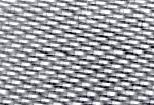 Apr 16, 2004 - 1:57 PM Apr 16, 2004 - 1:57 PM
|
|
|
Enthusiast      Joined Nov 12, '02 From Baltimore, MD Currently Offline Reputation: 1 (100%) |
I think I'm going to try making something out of fiberglass. Ive wanted to for some time and finally I decided I want to make something small just to see how hard it really is lol. I know the process but I just dont know all of the materials I need. I already have an electric sander and some fiberglass body filler (i guess I can use that to make the whole thing look smooth, right?) What else do I need, and does anybody have a suggestion for a beginners fiberglass project?
Thanks, Chucky --------------------  |
 |
Replies
 Apr 17, 2004 - 9:30 AM Apr 17, 2004 - 9:30 AM
|
|
|
Enthusiast      Joined Nov 4, '02 From Davenport Iowa Currently Offline Reputation: 0 (0%) |
One thing I would recomend... wear TWO pairs of gloves
Also you don't really need a paint brush, but some people perfer it. I personally just use my hands and work the resin into the glass before I apply it then I run my fingers down it to get off all the excess resin and loose fibers - that way when I lay it down there isn't too much small fibers everywhere which can happen sometimes with the dabbing of the paint brush. The most important thing that I have noticed is to makesure that you have your resin evenly over everything, a dry spot is a pain to deal with. You might want to also look into an accelerator for you resin. I don't usally use it but it sometimes really helps, but can turn your glass purple As for the matting/cloth issue: sSo everyone knows what I am talking about cloth - thicker strand woven sheet, smooth feeling  matting - actual fiber, coarse feeling  Matting is alot better than cloth - period. And here is why Matting is woven 100x more that ne cloth I have ever seen. This increases the strenght of it alot, It is also generally multi layer strands that intersect at either 45 degree angles or 90 degree angles within each piece which adds alot of interal strength to the piece. When you lay your glass down by hand and are doing mutilple layers you should be rotating the pieces whenever possible so that the weave in the matting is at 45 degree angle from the layer below it - this is simple geometry and most of you should be able to understand what I am talkin about and why this is important for strength, if you are building a piece with alot of flex needed lay the pieces all in the same direction. Also the strands inside the matting are generally shorter than in the cloth. This also adds strength, think of a 6 foot 2x4 - its gonna be alot eaiser to break in half than a 3 ft 2x4. It will also flex less the smaller it is. If that dont convince you let me ask you this... When was the last time you walked into a body/custom shop and saw them using cloth in a fiberglass chopper(spraygun)??? Now I'm not saying that cloth doesn't have it purposes.. but for the kind of stuff that most of us will use fiberglass for the cloth really isn't gonna cut it. It has been my experince that the cloth works best for light weight repairs with minumal amount of sanding, it is also good for areas where there will be alot of flex. But its is harder to work with than the matting for tight areas. Cloth is not something that should be ignored, like I said it does have it's purposes but for the level that most of us are going to be working on.. just use the matte it will be alot better for you. Point is though.. use what you want and what you feel comfy with and lets not argue about it cuz its pointless --------------------  99 project version 3.0.. hello SEMA 2010 =) |
Posts in this topic
 bojangles_8686 Fiberglass Apr 16, 2004 - 1:57 PM
bojangles_8686 Fiberglass Apr 16, 2004 - 1:57 PM
 Phat_99CeliGT time and patience is #1
if u don't have that, ... Apr 16, 2004 - 1:59 PM
Phat_99CeliGT time and patience is #1
if u don't have that, ... Apr 16, 2004 - 1:59 PM
 Coomer Yeah, fiberglass takes a long time to make somethi... Apr 16, 2004 - 3:32 PM
Coomer Yeah, fiberglass takes a long time to make somethi... Apr 16, 2004 - 3:32 PM
 bojangles_8686 Thanks for the info guys... but im still not sure ... Apr 16, 2004 - 3:58 PM
bojangles_8686 Thanks for the info guys... but im still not sure ... Apr 16, 2004 - 3:58 PM
 Coomer You can make it using MDF, or fiberglass. It all d... Apr 16, 2004 - 4:10 PM
Coomer You can make it using MDF, or fiberglass. It all d... Apr 16, 2004 - 4:10 PM
 celimanST A good place to get FG is a boat repair shop they ... Apr 16, 2004 - 4:25 PM
celimanST A good place to get FG is a boat repair shop they ... Apr 16, 2004 - 4:25 PM
 toyotaspeed_90 coomer... too bad you don't live here anymore.... Apr 16, 2004 - 5:00 PM
toyotaspeed_90 coomer... too bad you don't live here anymore.... Apr 16, 2004 - 5:00 PM
 bojangles_8686 QUOTE (Coomer @ Apr 16, 2004 - 4:10 PM) You can ma... Apr 16, 2004 - 5:07 PM
bojangles_8686 QUOTE (Coomer @ Apr 16, 2004 - 4:10 PM) You can ma... Apr 16, 2004 - 5:07 PM
 Coomer QUOTE (bojangles_8686 @ Apr 16, 2004 - 2:07 PM) QU... Apr 16, 2004 - 5:54 PM
Coomer QUOTE (bojangles_8686 @ Apr 16, 2004 - 2:07 PM) QU... Apr 16, 2004 - 5:54 PM
 Drocay QUOTE FG mat vs. FG cloth = mat is alot stronger a... Apr 16, 2004 - 6:47 PM
Drocay QUOTE FG mat vs. FG cloth = mat is alot stronger a... Apr 16, 2004 - 6:47 PM
 celimanST QUOTE QUOTE FG mat vs. FG cloth = mat is alot stro... Apr 16, 2004 - 10:56 PM
celimanST QUOTE QUOTE FG mat vs. FG cloth = mat is alot stro... Apr 16, 2004 - 10:56 PM
 toyotaspeed_90 i'm sorry..... matting is NOT stronger than cl... Apr 17, 2004 - 4:41 AM
toyotaspeed_90 i'm sorry..... matting is NOT stronger than cl... Apr 17, 2004 - 4:41 AM
 celimanST i did alot of research before i started my FG proj... Apr 17, 2004 - 7:12 AM
celimanST i did alot of research before i started my FG proj... Apr 17, 2004 - 7:12 AM
 pxcr440 i read it all but i dont think anyone said that wh... Apr 17, 2004 - 12:30 PM
pxcr440 i read it all but i dont think anyone said that wh... Apr 17, 2004 - 12:30 PM
 Coomer QUOTE (pxcr440 @ Apr 17, 2004 - 9:30 AM) i read it... Apr 17, 2004 - 12:52 PM
Coomer QUOTE (pxcr440 @ Apr 17, 2004 - 9:30 AM) i read it... Apr 17, 2004 - 12:52 PM
 celimanST QUOTE Do you find it pretty hard to work from the ... Apr 17, 2004 - 1:33 PM
celimanST QUOTE Do you find it pretty hard to work from the ... Apr 17, 2004 - 1:33 PM
 toyotaspeed_90 ok..... i think all of you aren't using the sa... Apr 17, 2004 - 2:44 PM
toyotaspeed_90 ok..... i think all of you aren't using the sa... Apr 17, 2004 - 2:44 PM
 toyotaspeed_90 also.... again from my personal experience.... if ... Apr 17, 2004 - 2:47 PM
toyotaspeed_90 also.... again from my personal experience.... if ... Apr 17, 2004 - 2:47 PM
 pxcr440 QUOTE (Coomer @ Apr 17, 2004 - 5:52 PM) QUOTE (pxc... Apr 17, 2004 - 3:36 PM
pxcr440 QUOTE (Coomer @ Apr 17, 2004 - 5:52 PM) QUOTE (pxc... Apr 17, 2004 - 3:36 PM  |
8 User(s) are reading this topic (8 Guests and 0 Anonymous Users)
0 Members:
| Lo-Fi Version | Time is now: January 17th, 2025 - 2:25 AM |



